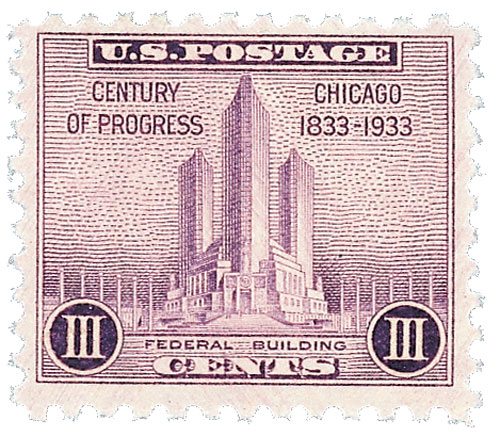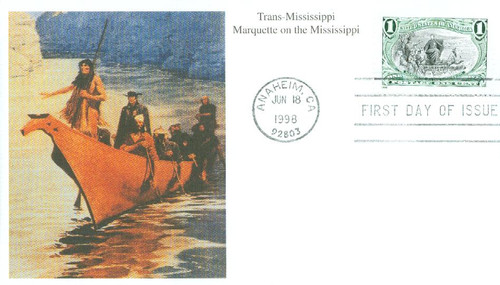
# 3209a - 1998 1c Trans-Mississippi: Marquette On The Mississippi
1998 1¢ Marquette on the Mississippi
City: Anaheim, CA
First Building In Chicago
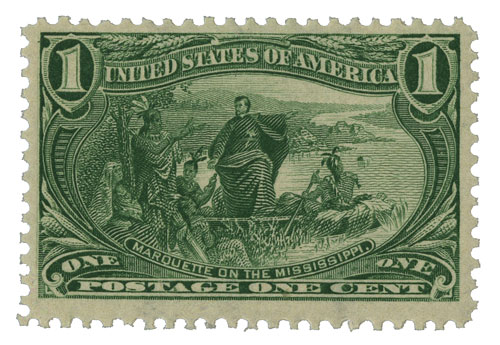
On December 4, 1674, Father Marquette erected the first building in what would later become Chicago.
Born in France in 1637, Jacques Marquette joined the Jesuits at the age of 17. He spent several years working and studying in France before being sent to New France as a missionary to the Indian population.
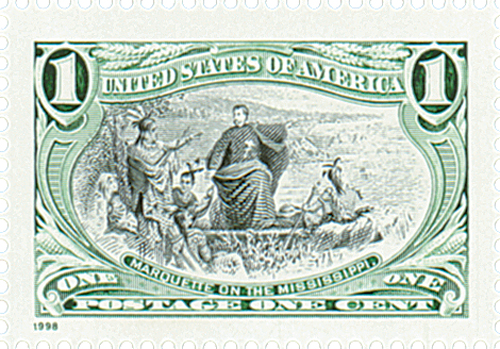
In 1668, Marquette was tasked with traveling down the St. Lawrence River in the western Great Lakes to establish new missions. During this trip, he created missions at Sault Sainte Marie and La Puente. While in La Puente, Marquette learned from the natives about a major trade route along the Mississippi River. The locals encouraged him to travel down the river to spread his mission, but a war between different nations forced him to leave the area and return to the Straits of Mackinac.
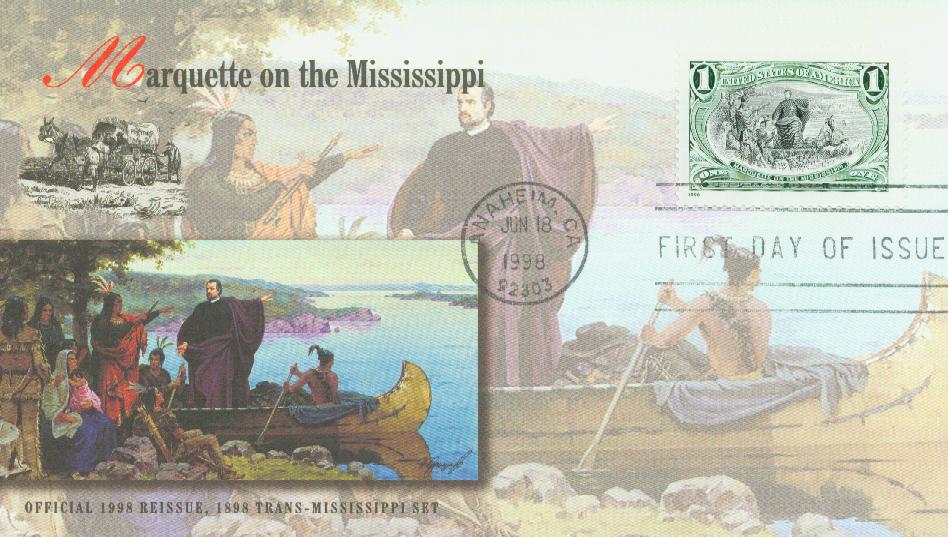
Once there, Marquette told his superiors about the Mississippi River and requested to take an expedition to explore it. In 1673, he received approval and was sent on an expedition led by Louis Jolliet. They traveled along the east coast of Lake Michigan, up the lower Fox River, across Lake Winnebago, and up the upper Fox River. When they stopped at the Wisconsin River, their two Indian guides left them, out of fear of river monsters.
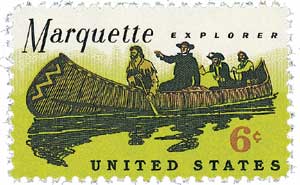
Marquette and Joliet then continued on their journey, becoming the first Europeans to explore the northern Mississippi. They came upon one tribe that warned them not to go further because some of the other nations wouldn’t show them mercy and that the river was home to dangerous monsters that ate entire canoes. Marquette thanked them for their concern but said that he had to continue because “the salvation of souls was at stake, for which I would be delighted to give my life.”
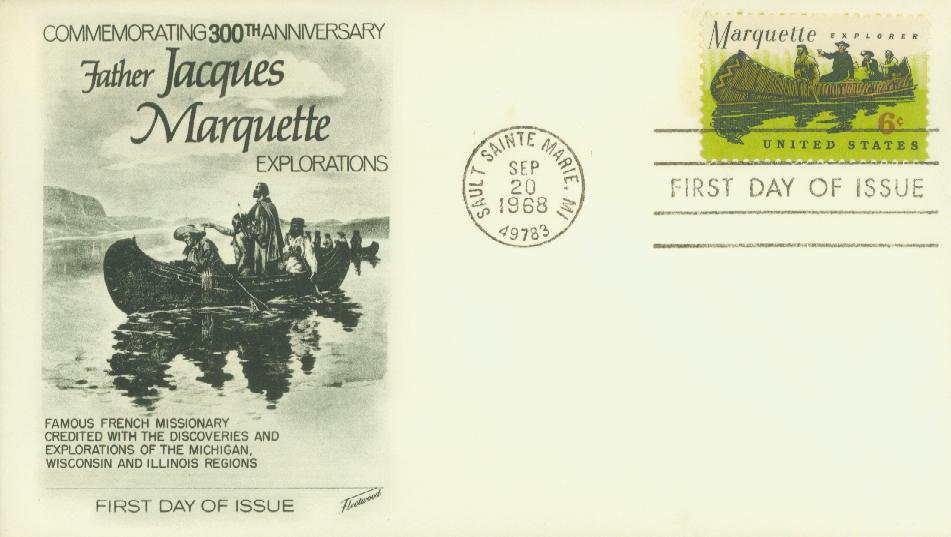
The pair resumed their exploration and Marquette founded a mission among the Illinois Indians. After returning home, Marquette embarked on another missionary journey. In late December 1674, he and two companions were caught in a bad winter storm on Lake Michigan.
On December 4, they built a log cabin to protect themselves from the elements – creating the first temporary European settlement in what would eventually become Chicago. Father Marquette died the following year at the age of 37 from dysentery.
1998 1¢ Marquette on the Mississippi
City: Anaheim, CA
First Building In Chicago

On December 4, 1674, Father Marquette erected the first building in what would later become Chicago.
Born in France in 1637, Jacques Marquette joined the Jesuits at the age of 17. He spent several years working and studying in France before being sent to New France as a missionary to the Indian population.

In 1668, Marquette was tasked with traveling down the St. Lawrence River in the western Great Lakes to establish new missions. During this trip, he created missions at Sault Sainte Marie and La Puente. While in La Puente, Marquette learned from the natives about a major trade route along the Mississippi River. The locals encouraged him to travel down the river to spread his mission, but a war between different nations forced him to leave the area and return to the Straits of Mackinac.

Once there, Marquette told his superiors about the Mississippi River and requested to take an expedition to explore it. In 1673, he received approval and was sent on an expedition led by Louis Jolliet. They traveled along the east coast of Lake Michigan, up the lower Fox River, across Lake Winnebago, and up the upper Fox River. When they stopped at the Wisconsin River, their two Indian guides left them, out of fear of river monsters.

Marquette and Joliet then continued on their journey, becoming the first Europeans to explore the northern Mississippi. They came upon one tribe that warned them not to go further because some of the other nations wouldn’t show them mercy and that the river was home to dangerous monsters that ate entire canoes. Marquette thanked them for their concern but said that he had to continue because “the salvation of souls was at stake, for which I would be delighted to give my life.”

The pair resumed their exploration and Marquette founded a mission among the Illinois Indians. After returning home, Marquette embarked on another missionary journey. In late December 1674, he and two companions were caught in a bad winter storm on Lake Michigan.
On December 4, they built a log cabin to protect themselves from the elements – creating the first temporary European settlement in what would eventually become Chicago. Father Marquette died the following year at the age of 37 from dysentery.






